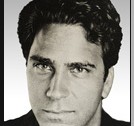This article was written by Phin Upham
Toys “R” Us is one of the only major toy retailers to survive the digital revolution. Its rival, KB Toys, went through several bankruptcies until Toys “R” Us absorbed it in 2009.
Toys “R” Us began as a baby-furniture retailer based out of Washington D.C. Its original name was “Childrens Supermart,” and it began business in 1948. Charles Lazarus founded the company and soon found himself receiving special requests for kids’ toys. He began with baby toys, but soon moved on to toys for older children as the requests grew.
By 1957, the Toys “R” Us brand was established and the focus of the retailer was completely changed to accommodate toys. Stores were even made to fit the brand, with a brown roof and rainbow colored stripes.
In its prime, the chain was considered a textbook example of a “category killer.” This means that the stores were so focused on one market segment, that it made them a tough competitor for newbies in the space. Larger stores could compete in some respects, but customers shopping for toys inevitably found themselves at Toys “R” Us.
Toys “R” Us has since launched several projects meant to keep them relevant by today’s standards. They launched a website, including use of KB Toys Web properties, and implemented new safety standards to keep kids safe. They also teamed with Kim Kardashian to create a line of baby furniture and clothes based on her ideas.
It’s estimated that Toys “R” Us employs upwards of 130,000 people during holidays.
